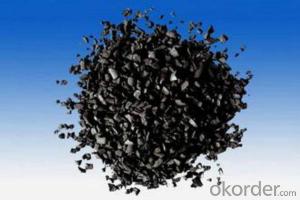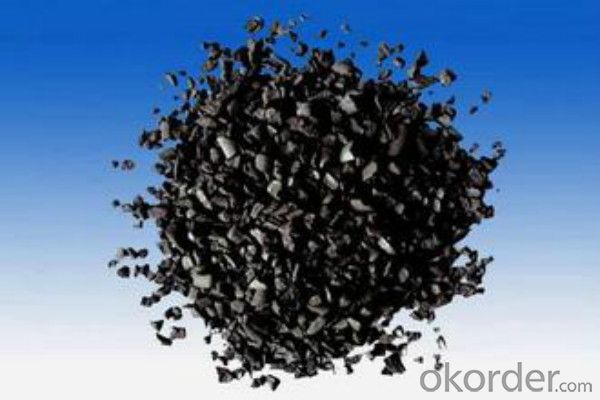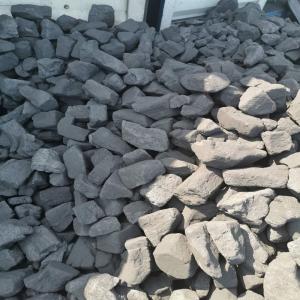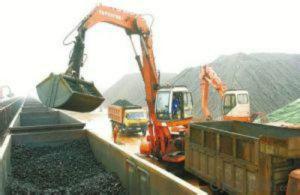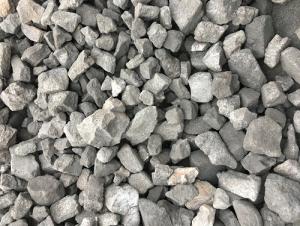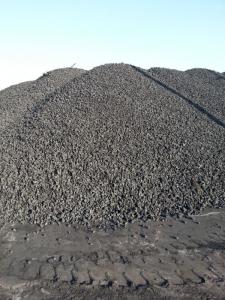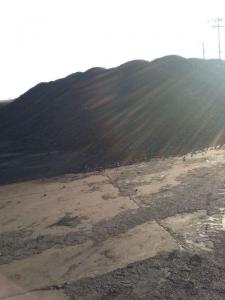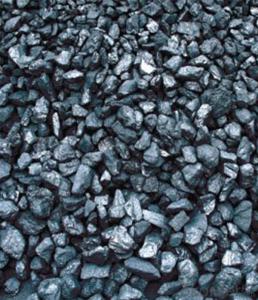Low Sulfur Coal Met Coke Manufactured in High Quality
- Loading Port:
- Tianjin
- Payment Terms:
- TT OR LC
- Min Order Qty:
- 900 m.t.
- Supply Capability:
- 15000 m.t./month
OKorder Service Pledge
OKorder Financial Service
You Might Also Like
Product Description
Met Coke(metallurgical coke) is a carbon material resulting from the manufactured purification of multifarious blends of bituminous coal. In its natural form, bituminous coal is soft;
Features
It is widely used in casting and metallurgy Smelting every tons Irons need about 0.4 to 0.6ton coke. As the reducing agent in the steel-making and foundry industry. It is playing more and more important role in the steel industry
Specification
Item No. | Ash (%) max | S (%) max | F.C. (%) min | V.M (%) max | Moisture (%) max | P (%) max | CSR (%) min | CRI (%) max | Cal.Value (≥Kcal/Kg) |
NF-M001 | 9 | 0.6 | 89.5 | 1.2 | 5 | 0.035 | 65 | 25 | 7250 |
NF-M002 | 10.5 | 0.6 | 88 | 1.2 | 5 | 0.035 | 65 | 25 | 7100 |
NF-M003 | 12 | 0.6 | 86.5 | 1.5 | 5 | 0.035 | 63 | 28 | 6900 |
NF-M004 | 13 | 0.6 | 85.5 | 1.5 | 5 | 0.035 | 60 | 30 | 6800 |
Pictures
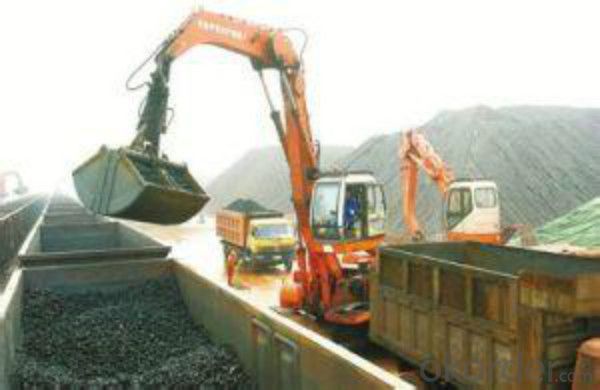
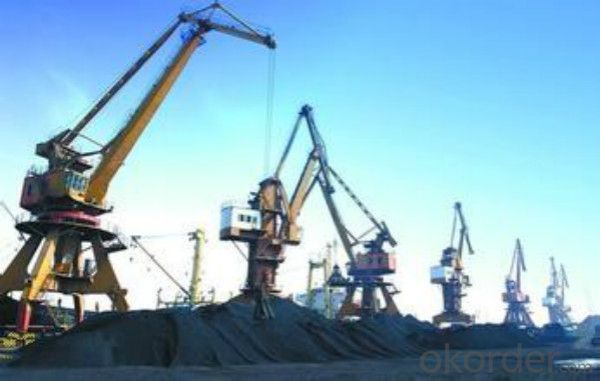
FAQ
1 What is the packing?
Packaging Details: | 1. jumbo ton bag |
2 Delivery time? Delivery Detail: |
15 days after we get the advanced payment or original L/C |
- Q: What is the role of carbonation in carbonated drinks?
- The role of carbonation in carbonated drinks is to provide the refreshing and effervescent sensation that is characteristic of these beverages. Carbonation is the process of dissolving carbon dioxide gas into a liquid, typically water, under pressure. This results in the formation of carbonic acid, which adds a tangy flavor to the drink. Carbonation serves several purposes in carbonated drinks. Firstly, it enhances the taste by adding a unique bubbly sensation that stimulates the taste buds and gives a refreshing mouthfeel. The effervescence created by the carbonation also contributes to the overall sensory experience of the drink, making it more enjoyable to consume. Furthermore, carbonation acts as a natural preservative in carbonated drinks. The carbon dioxide gas inhibits the growth of bacteria and other microorganisms, thereby extending the shelf life of the beverage. This is particularly important for soft drinks that are often stored for extended periods before consumption. In addition to taste and preservation, carbonation plays a role in the presentation of carbonated drinks. The release of carbon dioxide gas from the liquid creates bubbles and fizz, making the drink visually appealing and enticing. This visual appeal is often associated with a feeling of luxury and indulgence. Overall, carbonation is an essential component of carbonated drinks, providing taste, preservation, and visual appeal. It enhances the sensory experience and contributes to the overall enjoyment of these beverages.
- Q: Is carbon a metal or non-metal?
- Located in group 14 of the periodic table, carbon is classified as a non-metal. Contrary to metals, non-metals possess properties that are typically the opposite, such as poor conductivity of heat and electricity, low melting and boiling points, and brittleness. Carbon, in particular, is renowned for its capacity to generate an array of allotropes, notably graphite and diamond. Although these allotropes exhibit distinct physical and chemical traits, they all share the common attribute of being non-metals.
- Q: What are the environmental impacts of carbon emissions?
- Carbon emissions have a range of significant environmental impacts. One of the most pressing issues is the contribution to climate change. Carbon dioxide (CO2) is a greenhouse gas that traps heat in the Earth's atmosphere, leading to a rise in global temperatures. This increase in temperature has far-reaching consequences, including melting polar ice caps, rising sea levels, and more frequent and intense extreme weather events such as hurricanes, droughts, and floods. Another environmental impact of carbon emissions is ocean acidification. When CO2 is released into the atmosphere, a portion of it dissolves into the oceans, forming carbonic acid. This acidification disrupts the pH balance of the ocean, which is vital for the survival of marine life. It negatively affects the growth and development of coral reefs, shellfish, and other organisms that rely on calcium carbonate to build their shells or skeletons. Furthermore, carbon emissions contribute to air pollution. The burning of fossil fuels releases not only CO2 but also other pollutants such as nitrogen oxides (NOx), sulfur oxides (SOx), and particulate matter. These pollutants have detrimental effects on air quality, leading to respiratory problems, cardiovascular diseases, and other health issues for both humans and animals. Additionally, they contribute to the formation of smog and haze, reducing visibility and further degrading air quality. Carbon emissions also have indirect impacts on ecosystems. The alteration of climate patterns can disrupt ecosystems and affect the distribution and behavior of various species. This can lead to changes in the migration patterns of birds, the timing of plant flowering, and the availability of food sources. These disruptions can have cascading effects on entire ecosystems, potentially leading to the extinction of certain species or the invasion of non-native species. Lastly, carbon emissions contribute to the depletion of natural resources. The extraction and burning of fossil fuels for energy production not only release carbon dioxide but also require the destruction of habitats and ecosystems. This includes mining for coal, drilling for oil, and deforestation for palm oil plantations or grazing lands. These activities result in the loss of biodiversity, destruction of habitats, and soil erosion, further exacerbating environmental degradation. In conclusion, the environmental impacts of carbon emissions are diverse and far-reaching. They include climate change, ocean acidification, air pollution, disruption of ecosystems, and the depletion of natural resources. Addressing these impacts requires a concerted effort to reduce carbon emissions and transition towards cleaner and more sustainable energy sources.
- Q: What are the long-term effects of increased carbon emissions on ecosystems?
- Increased carbon emissions have significant long-term effects on ecosystems. One of the most notable impacts is climate change, as carbon dioxide is a greenhouse gas that traps heat in the atmosphere. This leads to rising temperatures, altered weather patterns, and increased frequency and intensity of extreme weather events such as hurricanes, droughts, and wildfires. These changes in climate have numerous negative consequences for ecosystems. For instance, rising temperatures directly affect the physiology and behavior of plants and animals. Many species have specific temperature requirements for reproduction, feeding, and survival, and even slight changes can disrupt their life cycles and lead to population declines or extinctions. Furthermore, increased carbon emissions contribute to ocean acidification, a process where the excess carbon dioxide in the atmosphere dissolves in seawater, forming carbonic acid. This acidification has devastating effects on marine ecosystems, particularly coral reefs and shell-forming organisms like oysters and clams. It weakens their calcium carbonate structures and inhibits their growth and reproduction, ultimately leading to their decline. In addition, carbon emissions influence the distribution and composition of plant communities. As carbon dioxide is a vital component for photosynthesis, elevated levels can enhance plant growth and productivity. However, this can also lead to changes in plant composition and the competitive balance between species, favoring certain fast-growing species over others. This can disrupt the delicate relationships between plants and their pollinators, herbivores, and other organisms, affecting the entire food web. Moreover, increased carbon emissions contribute to the loss of biodiversity. Many species are highly specialized and adapted to specific environmental conditions. As habitats change due to climate change, certain species may struggle to adapt or find suitable alternatives, leading to declines or local extinctions. This loss of biodiversity can have cascading effects throughout ecosystems, disrupting ecological processes and reducing the resilience and stability of entire ecosystems. Overall, increased carbon emissions have far-reaching and detrimental long-term effects on ecosystems. They cause climate change, ocean acidification, alter plant communities, and drive biodiversity loss. It is crucial to reduce carbon emissions and mitigate climate change to protect and preserve the health and functioning of ecosystems for future generations.
- Q: How does carbon impact food production?
- Carbon impacts food production in several ways. Firstly, carbon dioxide (CO2) is a crucial component for photosynthesis, the process through which plants convert sunlight into energy. Increased levels of atmospheric CO2 can enhance plant growth and crop yields. However, excessive carbon emissions from human activities, such as burning fossil fuels, contribute to the greenhouse effect, leading to climate change. Climate change affects food production by altering temperature and rainfall patterns, increasing the frequency and intensity of extreme weather events like droughts, floods, and storms. These changes disrupt agricultural systems, decrease crop productivity, and threaten food security. Additionally, carbon emissions contribute to air pollution, which can harm crop health and reduce yields. Therefore, managing carbon emissions and mitigating climate change are crucial for sustainable and resilient food production.
- Q: How does carbon impact the prevalence of landslides?
- Carbon, in the form of carbon dioxide (CO2), plays a significant role in impacting the prevalence of landslides. One of the primary ways carbon impacts landslides is through its contribution to climate change. Increased levels of CO2 in the atmosphere result in global warming, which alters weather patterns, precipitation levels, and the overall stability of slopes and landforms. Climate change caused by carbon emissions leads to more frequent and intense rainfall events in many regions. This increased rainfall can saturate soil and increase groundwater levels, making slopes more susceptible to landslides. Additionally, intense rainfall can erode the soil, further weakening the stability of slopes and increasing the likelihood of landslides. Another way carbon impacts the prevalence of landslides is through its impact on vegetation. Carbon dioxide is a vital component of photosynthesis, the process by which plants convert sunlight into energy. However, elevated levels of CO2 can affect plant growth and productivity. Plants play a crucial role in stabilizing slopes and preventing erosion through their extensive root systems. When carbon levels are high, plants may experience reduced growth, which weakens their ability to anchor the soil and protect against landslides. Moreover, carbon emissions contribute to the melting of glaciers and permafrost, which can trigger landslides in mountainous regions. Glaciers act as natural stabilizers, holding large amounts of rock and soil in place. When glaciers melt due to global warming, the sudden release of this material can trigger landslides and result in devastating consequences. In summary, carbon impacts the prevalence of landslides primarily through its contribution to climate change and its subsequent effects on weather patterns, vegetation growth, and the stability of slopes. Addressing carbon emissions and mitigating climate change is essential in reducing the occurrence and severity of landslides.
- Q: How does carbon affect the migration patterns of birds?
- Bird migration patterns are significantly affected by carbon emissions and resulting climate change. The rise in atmospheric carbon dioxide levels leads to global warming, which affects various environmental factors like temperature, precipitation, and vegetation growth. These changes directly impact the availability of food, water, and suitable habitats for birds during their migratory journeys. One way carbon affects bird migration is by changing the timing and duration of seasonal events. For example, warmer temperatures can cause plants to bloom earlier or delay their growth, disrupting the synchronized timing of flowering and insect arrival. This can have serious consequences for birds that rely on these resources for food during migration. If birds arrive at breeding grounds or stopover sites and find a lack of food, it can result in decreased survival rates, reduced reproductive success, and overall population decline. In addition, changes in precipitation patterns due to carbon emissions can affect the availability of water sources along migration routes. Birds depend on these water bodies for drinking and bathing, especially during long flights. If these water sources dry up or become scarce, birds may need to change their flight paths, search for alternative water sources, or risk dehydration. Furthermore, carbon-induced changes in vegetation cover can impact the availability of suitable habitats for birds. As temperatures rise, some bird species may struggle to find appropriate breeding or nesting sites. Forest-dwelling birds, for instance, may face habitat loss as forests degrade or transition to drier ecosystems. This disruption can affect migratory patterns and potentially lead to declines in population or shifts in range. Overall, the impact of carbon emissions on bird migration patterns is complex and multifaceted. As climate change unfolds, it is crucial to reduce carbon emissions and implement conservation measures to ensure the survival and well-being of migratory bird populations. Protecting important stopover sites, promoting habitat restoration, and raising awareness about the consequences of carbon emissions can all contribute to preserving the intricate and vital phenomenon of bird migration.
- Q: What is carbon neutral agriculture?
- Carbon neutral agriculture encompasses farming practices that strive to balance the amount of carbon released into the atmosphere with the amount of carbon sequestered or removed. Its objective is to adopt sustainable and environmentally friendly methods that minimize greenhouse gas emissions and promote the absorption of carbon dioxide from the atmosphere. There are several key practices involved in achieving carbon neutrality in agriculture. One of these practices involves reducing the usage of fossil fuels by implementing renewable energy sources, such as solar or wind power, for farm operations. This approach aids in diminishing emissions associated with machinery, equipment, and transportation. Another crucial aspect is the management of soil health and the enhancement of carbon sequestration. This can be accomplished via practices like cover cropping, crop rotation, and conservation tillage, which help augment organic matter in the soil. Consequently, this contributes to the storage of carbon. Furthermore, carbon neutral agriculture advocates for the use of organic fertilizers and natural pest control methods, thereby minimizing the necessity for synthetic chemicals that emit harmful greenhouse gases. Offsetting carbon emissions is another strategy employed in carbon neutral agriculture. This may involve the planting of trees on the farm or in nearby areas to absorb carbon dioxide from the atmosphere. Additionally, it can encompass participation in carbon credit programs, where farmers receive compensation for implementing sustainable practices that reduce emissions. In essence, carbon neutral agriculture adopts a comprehensive approach to minimize the carbon footprint of farming operations. By reducing emissions and maximizing carbon sequestration, it aids in mitigating climate change and promoting a more sustainable agricultural system.
- Q: I saw a cell phone in the magazine, the global release of 900, no camera, what function is F1 carbon fiber material, actually sold 40000 yuan a piece!.. Everyone said that the circulation is so small, worth so much money? Or carbon fiber material worth so much money?
- See where, in a car for example transformation kit, with super run even if the civil area shape roughly the same but the price difference, if you feel that things are expensive, natural carbon prices go up, in fact carbon species layout production process characteristics of professional strength lot, do not understand
- Q: Rod box material, there is a kind of material called carbon fiber, who knows this material is good?
- Carbon fiber has many excellent properties, carbon fiber axial strength and high modulus, low density, high performance, no creep, non oxidation under the environment of high temperature resistance, good fatigue resistance, between heat and electrical conductivity between the metal and non metal, smaller thermal expansion coefficient and anisotropy, good corrosion resistance, X Radiability good. Good conductivity, thermal conductivity, good electromagnetic shielding, etc..
Send your message to us
Low Sulfur Coal Met Coke Manufactured in High Quality
- Loading Port:
- Tianjin
- Payment Terms:
- TT OR LC
- Min Order Qty:
- 900 m.t.
- Supply Capability:
- 15000 m.t./month
OKorder Service Pledge
OKorder Financial Service
Similar products
Hot products
Hot Searches
